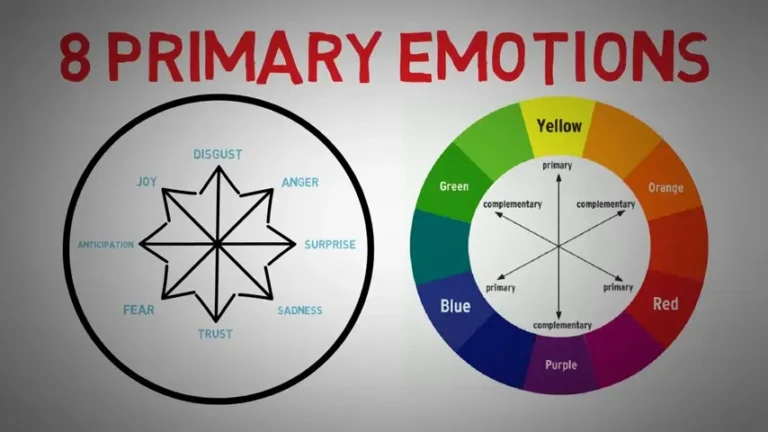Emotion Wheel for Children: A Guide to Emotional Learning

Helping children understand and express their emotions is a vital part of their development. An emotion wheel for children is a powerful tool designed to make this process engaging and accessible. By visually organizing feelings, it empowers kids to name their emotions, fostering emotional intelligence and communication skills. This guide dives into what makes an emotion wheel effective, how to use it, and why it’s a game-changer for parents, educators, and caregivers looking to support young learners in navigating their inner world.
What Is an Emotion Wheel and Why It Matters for Kids
An emotion wheel is a circular chart that categorizes emotions, often starting with core feelings like happy, sad, or angry and branching out into more nuanced ones like proud, lonely, or frustrated. For children, this tool simplifies the complex world of emotions into something tangible and interactive.
The Benefits of Using an Emotion Wheel
An emotion wheel helps kids articulate feelings they might struggle to name. It builds emotional literacy, which is linked to better social skills and self-regulation. By using a visual aid, children can connect emotions to specific situations, reducing tantrums and improving communication with adults and peers. It’s also a fun, non-threatening way to explore feelings, making it ideal for young learners.
How It Differs for Children vs. Adults
Unlike adult emotion wheels, which may include complex terms like “melancholy” or “euphoric,” children’s versions use simple, age-appropriate words like “scared” or “excited.” They often incorporate bright colors and images to engage young users, ensuring the tool feels inviting rather than overwhelming.
Key Features of an Effective Emotion Wheel for Kids
Not all emotion wheels are created equal. When choosing or creating one for children, certain elements ensure it resonates with young users.
Explore More On This Topic: The Feelings Wheel: Understanding and Using It for Emotional Awareness
Simple Language and Visual Appeal
The best emotion wheels for kids use clear, relatable words. For example, instead of “anxious,” a wheel might say “worried.” Bright colors and playful designs—like faces or emojis—make the wheel approachable. Each emotion might be color-coded (e.g., blue for sad, red for angry) to help pre-readers identify feelings visually.
Tiered Emotions for Deeper Understanding
A well-designed wheel starts with basic emotions in the center and expands to related feelings on the outer rings. For instance, “happy” might lead to “cheerful” or “proud.” This structure helps children recognize the spectrum of emotions, encouraging them to pinpoint their exact feelings.
Interactive and Customizable Elements
Some wheels include spinners, flaps, or digital versions that kids can interact with. Customizable wheels, where children can add their own words or drawings, foster a sense of ownership and make the tool more personal.
How to Use an Emotion Wheel with Children
Using an emotion wheel effectively requires guidance and creativity to keep kids engaged. Here are practical ways to integrate it into daily routines or classroom settings.
Introducing the Wheel in a Fun Way
Start by showing the wheel during a calm moment, like storytime or a family meeting. Explain that it’s a tool to help name feelings, using examples like, “When you got a new toy, you felt happy, right?” Let kids explore the wheel by pointing to emotions they recognize, making it a game rather than a task.
Daily Check-Ins for Emotional Awareness
Incorporate the wheel into morning or bedtime routines. Ask, “What’s your feeling today?” and have the child point to an emotion. This builds a habit of reflecting on feelings and opens the door to deeper conversations about their day.
Using the Wheel During Emotional Moments
When a child is upset, gently guide them to the wheel to identify their emotion. For example, if they’re crying, you might say, “Can you show me what you’re feeling?” Naming the emotion—say, “frustrated”—can de-escalate the situation and help them feel understood.
Fun Activities to Pair with an Emotion Wheel
Engaging activities can make the emotion wheel a favorite tool for kids. Here are some ideas to bring it to life.
Emotion Wheel Storytelling
Read a story and pause to discuss how characters might feel, using the wheel to identify emotions. For example, in “The Three Little Pigs,” ask, “How does the wolf feel when the house doesn’t fall?” This connects emotions to narratives, enhancing empathy.
Art and Craft Projects
Have kids create their own emotion wheel using paper, markers, and stickers. They can draw faces for each emotion or color-code sections. This hands-on activity reinforces learning and makes the wheel uniquely theirs.
Role-Playing Games
Use the wheel in a game where kids act out emotions. Spin the wheel or pick an emotion, then have them show it through facial expressions or actions. This builds emotional expression and makes learning playful.
Where to Find or Create an Emotion Wheel for Kids
Emotion wheels are widely available, but you can also make your own to suit your child’s needs. Online platforms like Teachers Pay Teachers or Etsy offer printable or digital wheels designed for kids, often with vibrant designs and interactive features. Educational websites like Scholastic or PositivePsychology.com provide free templates. For a DIY approach, draw a circle on poster board, divide it into sections, and add emotions with colors and images. Involve your child in the process to make it a bonding activity.
Explore More On This Topic: The Emotion Wheel – How to Use It
Conclusion
An emotion wheel for children is more than just a chart—it’s a gateway to emotional growth. By helping kids name and understand their feelings, it fosters resilience, empathy, and communication skills that last a lifetime. Whether you use a ready-made wheel or craft one together, the key is to make it fun and approachable. Start with simple check-ins, weave it into play, and watch your child’s emotional intelligence blossom. Embrace the journey of exploring emotions together, and enjoy the deeper connection it brings.



